As someone who loves history and weird cameras, the Graflex Century 35 is a camera that fits both of those items. The Century 35 is a straight-up rebadge of the Japanese-produced Kowa Kallo 35. I first had a chance to try this camera out last year in an episode of Classic Camera Revival, where it was chosen for me to use by my good friend John Meadows, who gifted the camera by the end of the episode to me. Despite being primarily an SLR shooter, I do like some rangefinders. This camera fits the bill with my rangefinders, is compact and straightforward, and produces excellent images despite its age. Thanks again to John Meadows for this camera!
Camera Specifications
Manufacturer: Kowa Optical Works
Seller: Graflex Inc.
Model: Century 35
Based On: Kowa Kallo 35
Type: Rangefinder
Format: 135 (35mm), 36x24mm
Lens: Fixed, Kowa Opt. Works Prominar F.C. f/2.8 48mm
Shutter: Seikosha MX Leaf Shutter, 1″ – 1/500″ + Bulb
Dimensions (WxHxD): 126x74x31mm (Approximate)
Weight: 601g (Approximate)
Year of Manufacture: 1957-8, available until 1960
Background
The history of the Century 35 is probably the least straightforward that I’ve encountered while doing these reviews. And that’s because Graflex’s work with roll film often relied on other companies to produce the cameras. Graflex is better known for its work with large format, iconic press cameras, and less-known monorail cameras. And to understand where the Century 35 came from, there are four historic firms, Graflex, Kowa, Candid Camera Corp, and Ciro. The oldest of the four is Graflex, originally named Folmer & Schwing. Founded by William F. Folmer and William E. Schwing in 1887, first as a gas lamp fixture producer, then added bicycles and cameras by 1898. From 1905 to 1926, the company was a division of Eastman Kodak and relocated to Rochester before returning to independence as the Folmer Graflex Corporation in 1926. The company became known for its quality press cameras, such as the Speed Graphic and Crown Graphic cameras. Renamed Graflex by 1945, the company began to seek out a way to enter the 35mm market in 1950. Kowa was formed in 1894 as a textile shop in Nagoya, Japan, before entering the spinning industry in 1919. In 1939 the spinning and trading branches of the company were divided with the trading company incorporating under the name Kōwa K.K, and after the war, worked on diversification under the name Kōwa Kōki Seisakusho (興和光器製作所, meaning Kowa Optical Works) in 1946. They were producing eyeglasses first before moving into the world of opera glasses and the lucrative binoculars, spotting and rifle scopes. The latter three were purchased by American troops occupying Japan. Camera production began in 1954 with the Kalloflex TLR. The final two companies, the first being the Candid Camera Corporation of Chicago, IL, was founded by Carl and Joseph Price with Benjamine Edelman in 1938. They focused on producing 35mm rangefinder cameras, and they sold the design of their Cee-ay 35 camera to the Detroit, MI and later Delaware, OH Ciro Corporation in 1949. Ciro produced two cameras, the Ciro 35 (based on the Cee-ay 35) and the Ciroflex TLR. Graflex bought out the entire Ciro company in 1950 and took the plans, parts, and toolings to their cameras to produce Graflex versions of these cameras. The result was the 1955’s Graflex Ciro 35, almost a carbon copy of the original version of the camera. The Ciro 35 is a 35mm coupled rangefinder camera featuring a 50mm Wollensak Anastigmat lens, available in f/4.5, f/3.5, and f/2.8 versions, with an Alphax or Rapax (Century branded) shutter. Graflex continued to rework the Ciro 35 design and released the Graphic 35 later in 1955. While based on the Ciro, the entire design and look of the camera were redesigned. One of the unique parts of the Graphic 35 is the push button focusing and the universal Spectramatic display for setting exposure when working with flash bulbs. The camera featured a Rodenstock 50mm lens in f/3.5 or f/2.8 with a Prontor-SVS shutter. By the end of the decade, production shifted to Japan, and Graphic 35 ended its life in 1958, although it continued to be available for sale until 1960. Kowa had been slowly improving their camera line and in 1955 released the Kallo 35, a fixed lens 35mm rangefinder with a Promiar lens available in three types, a 45mm f/3.5, 48mm f/2.8 and 50mm f/2, all in a Seikosha MV shutter. When Graflex began to seek to move production to Japan, they fixed on the Kallo 35 and contracted Kowa out to produce a Graflex-branded version of the camera. In 1957 the Graflex Century 35 hit markets, and despite having the shutter branded Century 35 and the Graflex badge stuck on the top of the camera, the Kowa brand remained clear. Although under the Graflex name, only the cameras’ 45mm f/3.5 and 48mm f/2.8 versions were available. Sadly Kowa ended the production of the Kallo 35 in 1958, and so did the Century 35. The relationship between the two companies continued, with the Kowa 35N being produced and rebranded as the Century 35A starting in 1960. But for Graflex, the writing was on the wall; in 1958, General Precision purchased the failing company selling it to Singer in 1968. And by 1976, everything was sold to Cambo and Toyo 1976. Kowa, however, continues to operate today and still produces optical scopes and binoculars.
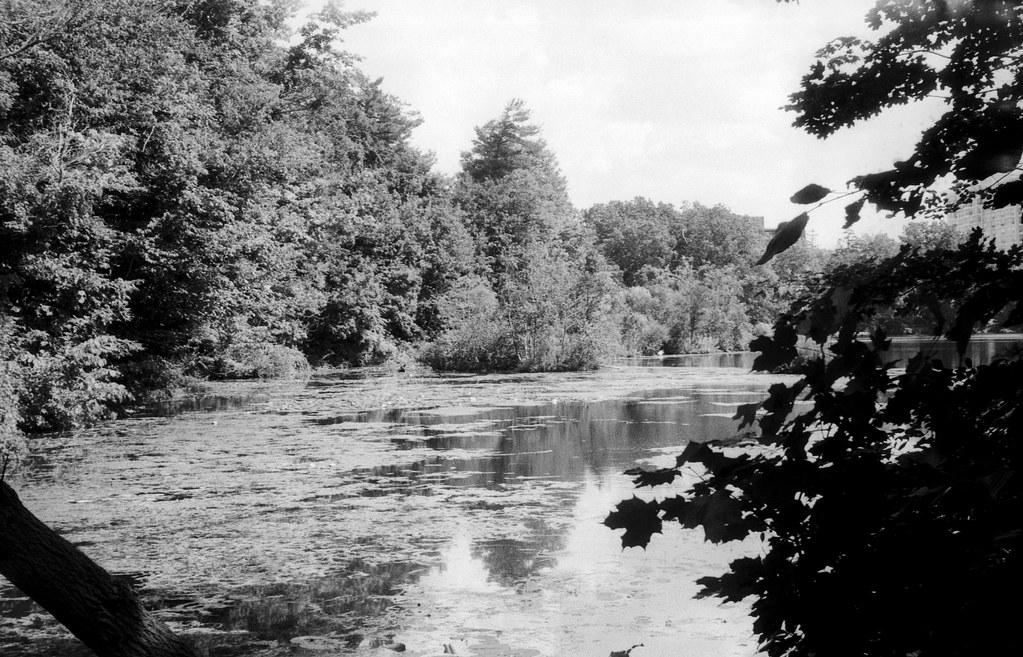


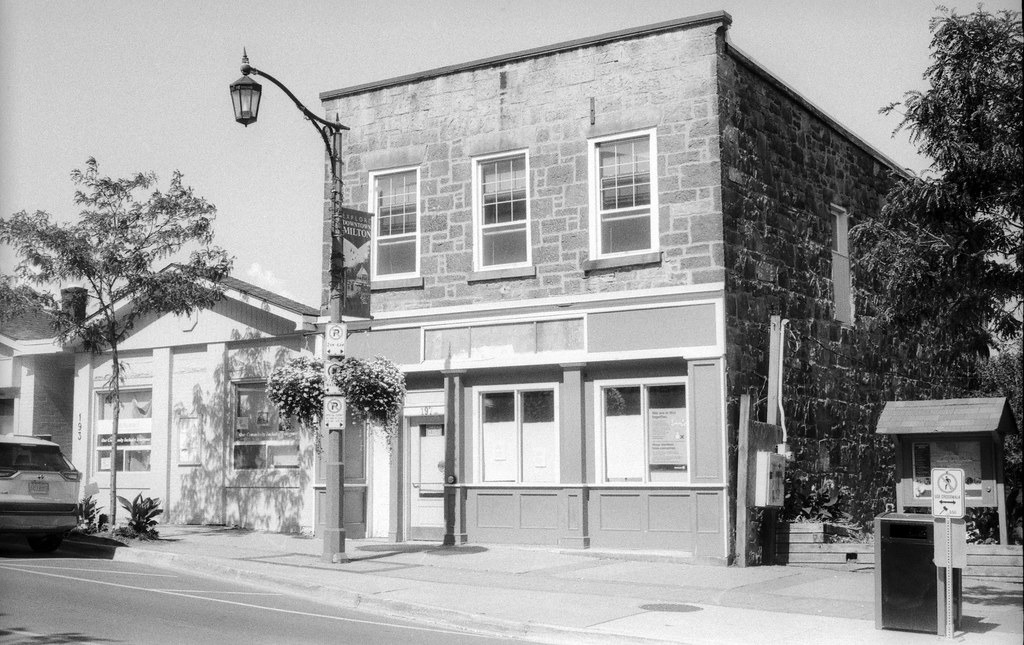
Impressions
I love the look of those 1960s rangefinders with the big lens barrel stuck on the front. But these have nothing on the slick mid-century design of the previous decade. And the Kallo 35 is that type of camera. It’s incredibly compact while extremely well-built and heavier than you might expect. The camera itself is all metal, and the Graflex branding is apparent across most of the camera, but if you look closer, you’ll see that the shutter, lens, and film door all still carry the Japanese branding from Kowa and Seikosha (Seiko). The design itself is well thought out, with the focusing ring including two large knobs on the lens barrel that make life easy with the exposure controls on the shutter, which is integrated into the lens barrel. I have the 48mm f/2.8 version or the higher tier version of the Century 35. The film advance is all metal and a bit rough, but it doesn’t tear your sprockets even with a single stroke, the shutter release is well placed, and the camera is comfortable to hold. The one nice addition is an integrated view/rangefinder; although smaller and a bit dim, there’s still good contrast on the rangefinder patch. And these two things are more due to age than design. The one thing that stands out is the exposure controls. The Kowa engineers expected the photographer to set their aperture and adjust the shutter speed, as the aperture control is smaller than I expected. In contrast, the shutter controls are easily adjusted dial at the front of the lens barrel. However, the aperture is displayed clearly in a window at the top of the lens barrel. There is always an excellent depth-of-field scale at the top, which helps when you’re out and can’t be bothered to focus and instead can rely on zone focusing. The shutter speeds are also based on the older scale so that you will see speeds like 1/100″ and 1/50″ instead of 1/125″ and 1/60″. There is also no internal meter, but it has an accessory shoe that can fit a compact meter, such as the ReveniLabs unit. You do have to reset the frame counter each time as well manually.
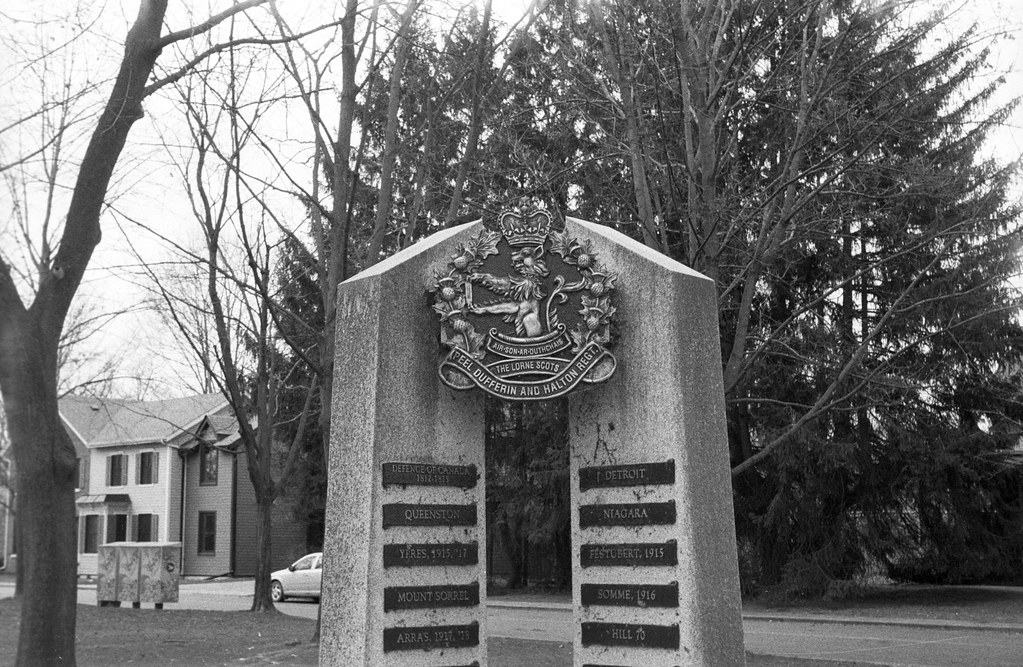
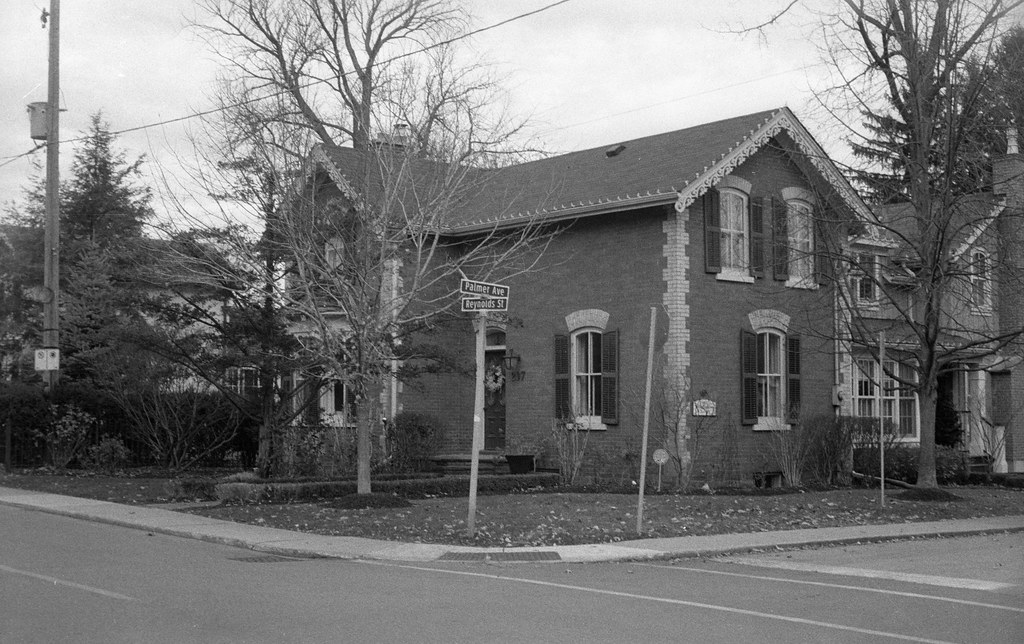


Experiences
Despite the age of the camera, it offers up a decent experience. While the camera looks like a solid chuck of metal, it is not too heavy and, with even a tiny strap, can be comfortable to carry around for a day. Its small size also doesn’t add as much extra weight to a camera bag as the overall size. Loading your film is easy; the door is a traditional hinged back with a sliding lock, not spring-loaded. The tail is easily secured under a metal tab on the take-up spool; then, a single cycle will ensure both sets of sprockets are engaged. Ensure the film door lock is slid back into place before heading out, or the back will fall open. The film counter is manual, so you can choose to reset this to zero before you start to advance. Usually, please give it a couple of cycles before going out to shoot. The viewfinder is still bright despite the age, and the rangefinder patch offers enough contrast to make focusing simple. Framing lines also help with composition and correction for parallax errors. At first glance, the two focusing knobs are strangely placed, but once you have the camera up to your eye, you can efficiently operate them with either hand. The small tab for adjusting your aperture can be fickle to use, especially in the winter when wearing gloves, but the action is smooth, as is the dial for adjusting your shutter speeds. As I mentioned, don’t be put off by the different shutter speed scales. If you’re into zone focusing, the sweet spot is f/11, and then use the depth of field scale to get your focus point and photograph without any concern for your focus. There is no integral meter, but the accessory shoe on the camera will accept an external meter like a Voigtlander VC2 or ReveniLabs unit. And the ReveniLabs until does an excellent job when metering with this camera. Additionally, you can use a handheld meter or go with Sunny-16. Once you get into a groove, the camera does take a bit more thinking than others but is enjoyable to work with, especially the quiet snap of the shutter. The film advance is reasonably long but doesn’t tear the sprockets along the film. I should note that the camera can develop frame spacing issues with age. The biggest problem is rewinding; you must push the gear release button and rewind using a knurled knob. At least you can pull the knob up above the top plate, giving you more torque.
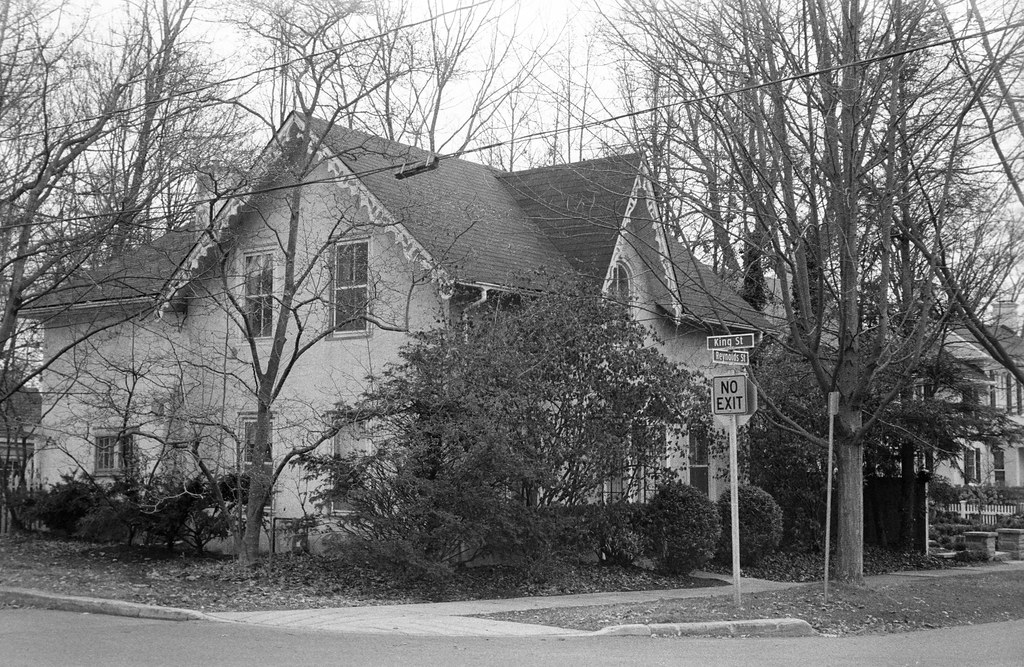

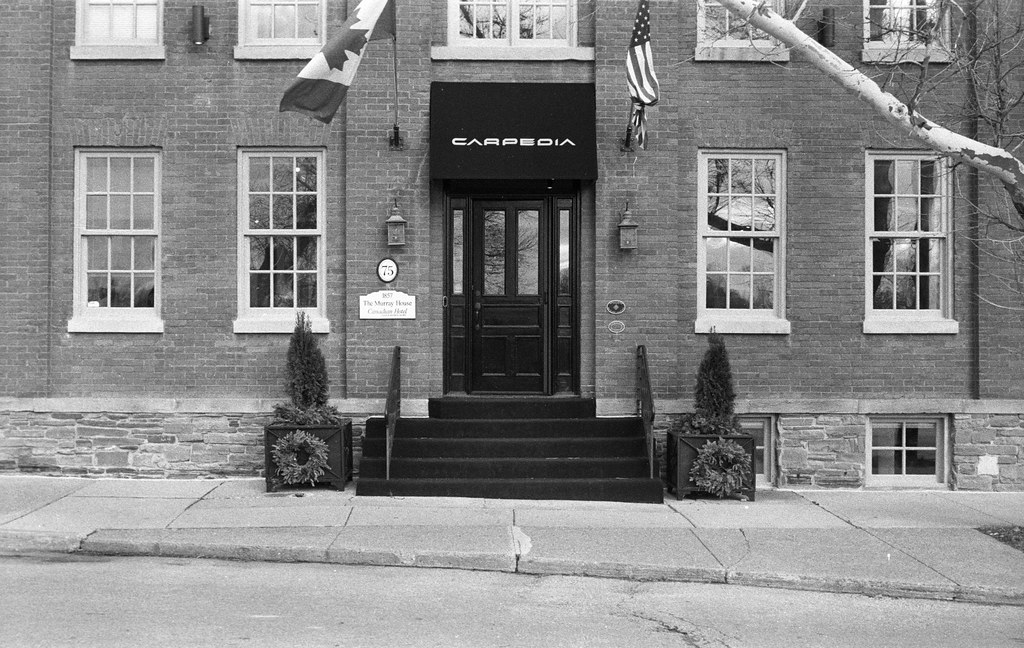
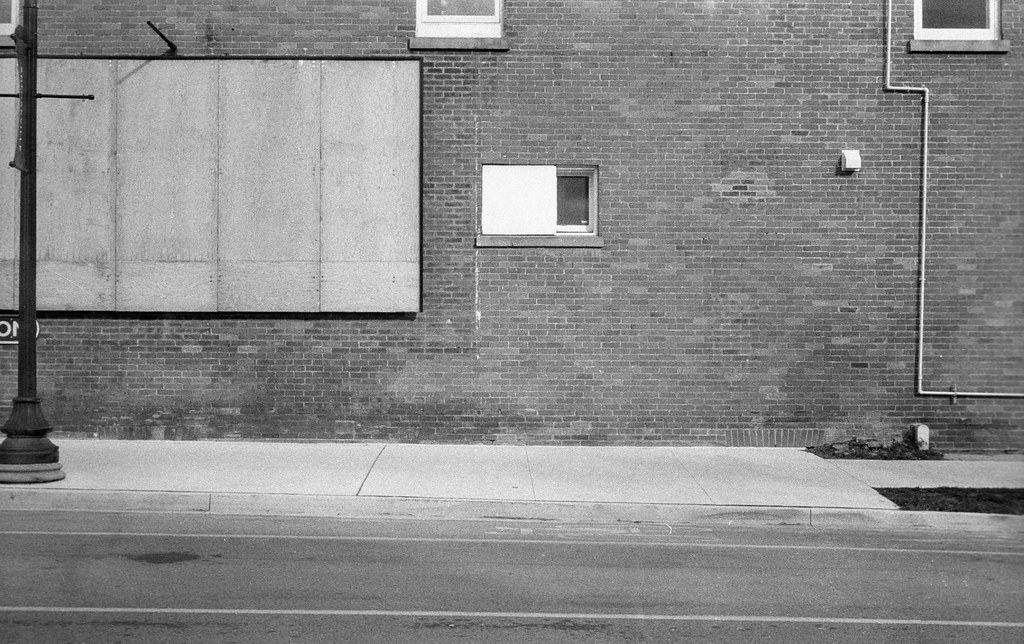
Optics
Which lens your camera has depends on the camera’s branding. Most fixed lens rangefinders of the mid-century came with either a 50mm or 45mm focal length. But Kowa created the Kallo 35 with three choices of lenses. At the lower tier is the 45mm f/3.5, which is not a bad option. The 45mm is a sweet spot for rangefinders, not too long or wide, and f/3.5 at the wide-open end is nothing to turn your nose up at either. In the middle is the 48mm f/2.8, and that 48mm choice seems odd to me, but you get a bit more access to light with that f/2.8. At the high-end, you have a 50mm f/2, fast with that classic normal focal length. The downside to this upper-tier lens is that it is larger and makes for a camera with great depth. When you get into the Graflex branded cameras, you are limited to only the 45mm f/3.5 and 48mm f/2.8 models. So despite seeing 48mm as an odd length, I decided to embrace it, and it isn’t too bad. It makes me think a little bit more about my composition than a focal length I’m familiar with and provides a happy medium. Optically, the lens is decent, but I’m not sure about the lens construction and have been unable to find that specification online (if you do know, please leave a comment). Add Lens Test Details Here.




Lowdown
At one point, I’m sure that these cameras were not worth as much as they are today. Age and a short production run have made these cameras a pricey deal on the used market. Prices have a wide range for the Kallo 35 brand, running from 130$ to over 600$, with either the 48mm f/2.8 or 50mm f/2 lens. However, if you want a deal, go for the Graflex-branded Century 35; the prices drop like a rock here. The prices range from 50$ to 100$; ensure you’re getting the Century 35, not the later version, Century 35A. Overall, I’m happy with this camera; finding one I like is always a good thing for someone who doesn’t like working with rangefinders. The age and look of the camera are suitable, both as a user and display piece. Plus, a camera with a fascinating history and linage that is complex almost makes it a great conversation piece. Getting the camera repaired will take someone familiar with cameras this age. Still, the shutter is easily serviced as the Seikosha-MX is a standard shutter based on Compur and Copal shutter technology. While not one I would recommend for anyone, this is one for you if you’re into mid-century cameras!
Further Reading
Don’t just take my word on the Kallo 35/Century 35; you can check out the reviews by other excellent camera reviewers!
James’ Camera Collection – Graflex Century 35


I really enjoyed the words and pix. Almost the definition of an MOR camera from that era. It seems that almost every maker that sold to a general market (Kodak, Agfa, Mamiya, Ricoh…) had a version
Thanks for the write up! By any chance, would you happen to know the optical configuration of the lens? A Tessar-type would have 2 elements in the front group and you’d count 4 reflections by shining a light.
Asking because I have an Olympus 35-S with a similarly odd 48mm f2.8 lens, which has 3 elements in the front group. Since the Kowa came out the same year maybe they share the same lens?
Regards from Toronto.
I was unable to find out what the lens construction on this camera is actually! There’s very little online information on Kowa lenses.
Thanks for the reply. Sorry, I had missed the text in the review where you said exactly that!
It’s relatively easy to visually determine the lens construction by counting the reflections of a small light source. If you’re up to the task I’d be happy to help.